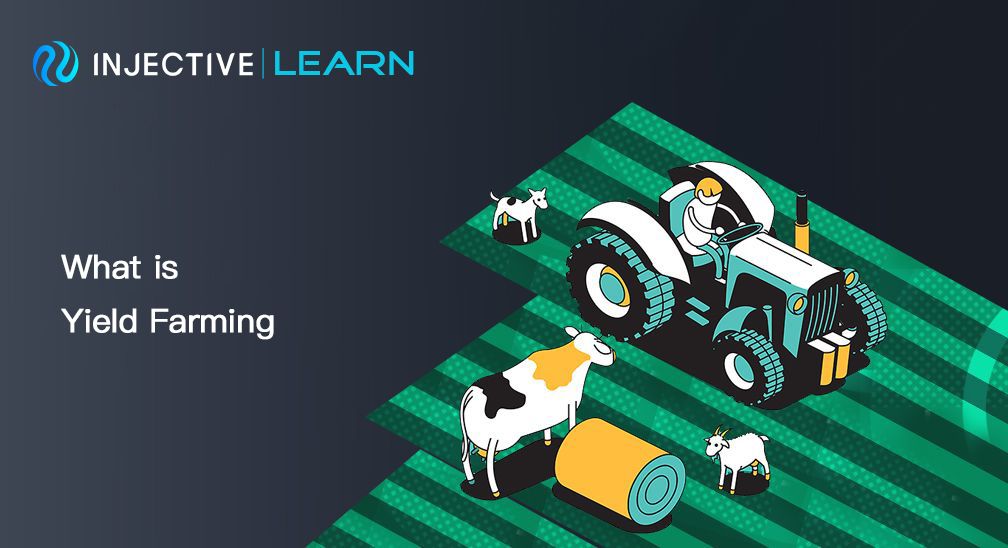Yield farming is a process that enables cryptocurrency holders to lock up their funds in return for yield.
Yield on a farm in the traditional sense consists of the amount of crop that is harvested. In decentralized finance (DeFi), yield farming refers to the return on assets generated by both interest earned via lending and additional token incentives.
In 2020, DeFi took the world by storm and gave rise to popular reward schemes such as yield farming and liquidity mining. In August of 2020 alone, the total market value of DeFi increased from $2 billion USDT to more than $8 billion. These numbers could not have been achieved without the investors who seized the opportunity to earn token rewards by providing liquidity to DeFi protocols. These investors are the original yield farmers, and their strategies have become increasingly popular amongst everyday cryptocurrency holders.
Yield farming is also quite expensive, especially due to rising Ethereum gas fees. For example, farming with less than $10,000 in Ethereum DeFi projects will often result in a net loss. These issues can prove to be a major hinderance for inexperienced investors. However, there remain ways to optimize yield for those who are familiar with the ecosystem.
How it Works
There are several strategies that DeFi yield farmers can use to earn passive returns.
A common strategy is to deposit cryptocurrencies in a decentralized lending platform and lend to other traders through smart contracts on the Ethereum chain. This in return generates yield for the lender.
The most basic yield farming strategy is to stake and lend stablecoins, such as DAI or USDT, through a DApp like Compound. Interest rates vary with demand, but for every day of participation, you get new COMP tokens for instance as well as additional interest. If the COMP token appreciates, your returns can grow rapidly as well.
Recently, the more popular strategy is liquidity mining through which farmers can earn rewards by providing liquidity to some DeFi protocols such as Balancer, SushiSwap, etc.
Liquidity Mining vs. Yield Farming
Liquidity mining which requires liquidity providers (LPs) to provide liquidity (staking tokens in a funding pool). In return, the LPs are provided token rewards.
So what is the difference between yield farming and liquidity mining?
Liquidity mining originates from two fundamental concepts in the cryptocurrency world, namely liquidity and mining. Liquidity refers to how easily assets can be converted into another asset. It is essential for creating, growing, and expanding the DeFi market. Mining of course alludes to the process used to mint new tokens through the process of mining in Proof-of-Work consensus mechanisms such as with Bitcoin.
Liquidity mining combines borrows from concepts in many ways and has played an instrumental role in the vigorous development of DeFi.
Yield farming is a simple process on top of liquid mining, which uses its main features to maximize the trader's benefits. In essence, yield farming uses various mechanisms such as liquidity mining, funding leverage, and risk comparison to move liquidity among various DeFi platforms.
In other words, liquidity mining is just one of many strategies for farming yield.
Yield Farming Platforms
Here we explore a number of popular yield farming platforms.
Money Markets: Compound
Compound is one of DeFi's primary lending protocols.
In June of 2020, yCompound launched the COMP governance token for liquidity mining, which largely sparked the yield farming boom. This encouraged users to deposit cryptoassets on the platform to expand the Compound's lending pool in order to earn COMP tokens as rewards.
The market value of COMP exceeded $700 million within a week of its launch and attracted the attention of yield farmers globally.
Exchanges: Curve
Curve Finance is the largest stablecoin liquidity pool in DeFi, offering LPs both fees and CRV tokens as rewards for adding their assets to a pool. Liquidity pools are configured across everal stablecoins such as USDT, USDC, DAI, and TUSD.
Every time someone takes a trade through a liquidity pool, LPs that contribute to that pool earn a fee plus some CRV tokens in return for helping to facilitate the trade. However, optimizing profits requires investors to consider impermanent loss (loss created by providing liquidity for an asset that rapidly appreciates or depreciates in value). Impermanent loss is especially a concern in Automated Market Maker (AMM) DEXs such as Uniswap.
Risks
There are several risks associated with yield farming. Firstly, the crypto asset you stake out is effectively held by smart contracts, and hackers may be able to find ways to exploit vulnerabilities in code especially when so many of these protocols remain unaudited.
Secondly, some assets that are being staked for yield farming are only a few months old and could potentially lose their value, causing the entire system to crash. Lastly, some of the DeFi protocols are built and developed by small and even anonymous teams with a limited budget who could also be dishonest players.
Conclusion
Yield farming presents unique opportunities to generate additional returns on crypto assets that you hold. These ideas and DeFi protocols that rely on yield farming continue to grow in popularity can potentially disrupt traditional financial markets further as we move forward.

About Injective
Injective is a lightning fast interoperable layer one blockchain optimized for building the premier Web3 finance applications. Injective provides developers with powerful plug-and-play modules for creating unmatched dApps. INJ is the native asset that powers Injective and its rapidly growing ecosystem. Injective is incubated by Binance and is backed by prominent investors such as Jump Crypto, Pantera and Mark Cuban.
Website | Telegram | Discord | Blog | Twitter | Youtube | Facebook | LinkedIn | Reddit | Instagram | Orbit Newsletter

